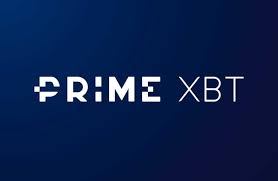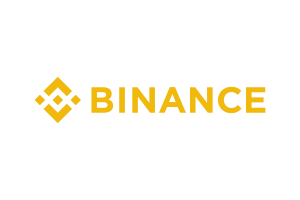Going multi-asset and emulating the funds sector is the way forward for 2021
As banks and fintechs go down the retail wealth management route, London’s experts look at stocks and investments for 2021, all of which would require a multi-asset solution. Perhaps 2021 can be the year in which retail FX brokers go multi asset and enter the managed fund sector.

This morning may well be a public holiday in the United Kingdom and the end of the year is still a few days away, however some of the top investment managers in London are now beginning to publicly state which portfolios they would look at next year.
Given that most of the investment management sector is looking not only at company stocks, but at funds and savings related products, as well as the matter that many banks, brokerage and fintech startups have been rallying resources to establish wealth management platforms over recent months, the viewpoints coming from London are yet more of a testimony to the need for FX and CFD brokerages to offer genuine multi-asset platforms and emulate the hedge fund sector.
Brian Dennehy of Fundexpert told the Daily Mail this morning “I would invest in International Consolidated Airlines Group (IAG) – British Airways in old money. This share, listed in London, should be a reasonably straightforward way to double your money in 2021.”
‘Why? Well, there is massive pent-up demand for holidays while IAG shares are an obvious target for investors looking for a brighter 2021 and who have a lot of cash to put into the market – be it retail investors, UK institutions, or global investors who are massively under-invested in Britain” said Mr Dennehy.
‘The big caveat, of course, is the virus taking a new and more dangerous path – so I would apply a stop-loss. I would sell the shares if they fall 15 per cent below my buying price – £1.60. So £1.36 and I’m out. But I’m confident I’m backing a winner” he said.
Jason Hollands of Tilney said “I would put the £1,000 in investment fund Fidelity Special Situations – via a tax-free Isa. It targets unloved and undervalued UK companies with bounce-back prospects – rather than those funds that are currently fashionable and trading on expensive valuations. I am convinced that 2021 – post Friday’s Brexit deal – will be a year of economic recovery in the UK.”
‘The UK stock market is undeniably cheap compared to other developed markets. It has had a terrible 2020, but it also has potential to be the star of next year, given it has big exposure to economically sensitive areas such as energy and banking that have been pummelled during the lockdowns” he said.
“The UK economy isn’t out of the woods yet and faces the challenge of high unemployment, but with coronavirus vaccines here, it’s almost impossible for things not to get better in 2021. Dividends, after being aggressively slashed this year, will start to rise again, as the vaccination programme rolls out. And people are itching to shop, socialise and travel after many months being caged up. Good news for the UK stock market. Good news for Fidelity Special Situations” said Mr Hollands.
Financial expert Ros Altman said “First, I would invest the money into a self-invested personal pension. By doing that, I get tax relief on top. So, if I pay basic rate tax, my £1,000 becomes £1,250. If I pay higher rate tax, I would have £1,666 once tax relief is added.”
“With more money to invest, even if my investments fall, I would still have more in my fund than if I had invested in an Isa or outside a pension. I’ll leave you to decide what tax bracket I fall into. As for specific investments, I am not prepared to say. But I believe shares should do better than bonds. I would buy investment trusts that have paid good dividend income for many years from well-managed global equity portfolios” she said.
“I would look to invest in exchange traded funds investing in Asian markets, as I think growth there will outstrip western economies. In addition, I would put some money into funds that aim to benefit from climate change adaptation and reduce carbon and plastic pollution. Finally, a slice of my money would buy some gold as a hedge” said Ms Altman.
Just a few months ago, as the deluge of banks and retail fintech firms began to enter the retail wealth management sector, FinanceFeeds attended the 2020 Hedge Fund Expo produced by Advanced Markets.
Professionals discussed this matter on a panel participated in by Andrew Gillibrand, a former Credit Suisse quant who is now CIO at UNION. He was an asset manager, having found that the timeline between engagement to commitment taking a long time. Mr Gillibrand had relationships in South Africa, Japan, Europe and realized that if the distribution issue exists for him, it exists for many, hence the foundation of UNION, Juan Colon of Machine Markets, formerly of Darwinex, which democratized access to capital and now has 60 million euros AUM, and is now making this technology available to managers, and lastly Ronald Richter, Managing Director of Bride Valley Partners, a capital introduction business and third party marketer helping asset managers in the alternative asset space to find investors, and has been active in hedge funds for 24 years.
Beginning the discussion, Ms Pittas asked the audience what their biggest worry is when launching a fund, 45% responded that lack of personal network to raise funds.
Following on, Mr Richter began to explain “I think the costs and engagement into a 50000 venture with limited budget in this particular environment which is very difficult for capital raising, you definitely need around a 2 to 3 year runway and have the cash for the working capital to at least have a chance to attract people as investors, because of course AUM is an important factor, the live track record is also important so it is not in the capacity of everyone to put that money down, especially if you have other costs such as mortgage, family commitments and life expenses. The question is how do you get out there to build that track record?”
“There are some options, such as going onto a platform, or if you are happy to sacrifice your independence for a few years, you could try to get hired by the big names, and make your track record that way, or you could go to a first loss provider which may not be the best choice for investors but you could always prove your track record that way” said Mr Richter.
“There are providers out there who will provide you with an umbrella and operational structure and regulatory facility to operate your strategy in a nice way. I will say there is a flurry of service providers out there, you should perhaps pay a bit more for the good quality service providers, which sounds obvious but if you add a layer of due diligence to your offering by adding a few service providers, make sure they are good quality. Investors today like to tick boxes and eliminate you for no reason, so be careful who to choose” he said.
“Do those without an investment banking background, in today’s case about half the audience are not legendary traders, therefore what advice do you have for those without this background and what are the general barriers to entry?” asked Ms Pittas.
Mr Richter said “Investors are looking for pedigree, track record and stability so if you cannot show an extremely relevant past, making a sacrifice of a couple of years by being on one of these platforms if you are able to get into an asset manager where you are able to build this is worthwhile. You see a lot of asset managers with a great track record and some don’t have the background of the big asset managers, but some others should spend two to three years in an asset manager to get proof of concept.”
“I think it comes from the other side of the spectrum, and I’m pretty sure that everyone in the audience today aren’t so worried about the objective aspects, more building up the network. Some of this was addressed in Chris Anderson’s book called The Long Tail saying anyone can write a book, sell things on Amazon or run a fund. In order to build a sound record, you need good assets so you can commit time to it, you need to do it in a place where it costs very little, and use the idea of organizing for success. You do not want to be fragmented and have an account with 4 different brokers and push signals all over the place. You need a venue with good suitability, and engage today with any potential customer you may have in the future as it takes a very long tiem to convince someone to give you $5 million and longer to get them to give you $5o million ” added Mr Gillibrand.
Mr Colon then said “What I hear from the big guys is that is is not always clear to me that track record acquired when working for them is not actually yours when you leave. I think you need to create online trust, and this is a challenge that at some point someone will break through it. I agree with Andrews’ point about not spreading across various venues that takes up bandwidth, however we shouldn’t need to force people to go and work in London for two to three years and give up on their independence.”
Mr Gillibrand said ” I agree. the language that supports the underlying product has not been organized . You cannot call it an ETF, and people talk about alternative investments that they are pursuing, but we should organize the language around trust and the objective ways of delivering these alternatives into capital. We need an organized language that includes subjective and investable attributes.”
Mr Colon said “You don’t have to go for a $150 million operation, you can charge 20% success fees on a smaller fund and I would sign up for that. The traditional way has always been there, there are leaner alternatives should people want a journey toward something bigger, however you could continue to be a quant doing something different to finance and making a side living to help you with your daily expenses”
Mr Richter said “I agree with both of you here. The financial industry has been slow to catch up with the technological advances, and we remain relatively old fashioned, and I think there is enough money out there to run a $50 million fund and get a good living out of it, but getting $10 million even has become very difficult and even family offices are focusing on established managers, and now with this Covid situation doing proper due diligence has become even more difficult so unfortunately for smaller managers it’s been a struggle recently to get even smaller tickets, so it requires a lot of time. I have not yet seen disruption of technology that should be brought to this industry and especially in terms of marketing many things have been tried but I do not yet see anything that has replaced the relationship factor so I am still in a job for the time being.”
“I didn’t imply that you’d be out of a job Ronald!” said Mr Colon. Mr Gillibrand then said “There are lots of guys who are young and want the billion dollar tickets, the younger guys will grow into that space, so if Ronald and I can organize this to be able to distribute into the long run investment of synthetic derivatives which is a lot of what these are trading.”
Ms Pittas said “A survey was done recently showing the middle point being around $100 million, so there are significant barriers to entry, so this is where an umbrella situation can help.”
She then asked the audience how much AUM it would be before a fund manager decided to go under an umbrella set up.
Over 60% of the audience responded that between $1 million to $10 million would be the lowest they’d go before considering going under an umbrella setup.
Mr Richter said “I think this makes sense, an umbrella situation would cost something, and if you are an appointed representative, or regulated personally, these costs mount up so it would be easier to attract capital if there was a structure there. On paper it looks easy to raise $10 million, but it is not, and this is the starting point of those using platforms.”
“I have a question for you Ronald” said Mr Gillibrand. “What do these guys tend to raise? Does it start at around $10 million?”
“You used to be able to get tickets between $5 and $15 million easily, but now there are firms that will take a stake in your business and we are looking at tickets of around $50 million, then down the scale we have family offices which range between $5 and $20 million, and there it is more a question of relationship. They like what you do, and they don;’t have the same incentive as the big institution. You have to focus on the investors you want. This would then refine a bit what you can expect to raise at the beginning” said Mr Richter.
“A lot of managers have tried to go to family offices to get those tickets, and it is possible. If a principal of a family office likes you, then you have some chance of getting in” he said.
“What allocation are they looking for? Are they looking for higher volatility or steady return?” asked Mr Gillibrand
“Primarily it is finding a strategy that is doing something different. What is that strategy bringing to their own portfolio, for example. The risk factor is higher than at an institution, but of course generally they’re looking for 20% returns with volatility of around !2% but there is no real rule on this. There are more chances to find some figures, a manager has to open to being more bespoke and customizing this to offer new things and find new investors, so you have to be open to that too” said Mr Richter.
Ms Pittas said “Umbrellas are more popular with startups getting to market quickly, however we would like to see what the main advantages are, ignoring the elephant in the room which is the FCA’s letter on market oversight and the lack of it, but there are clearly benefits.”
“One very important point is that the PM is focusing 100% on running the strategy instead of spreading it thin. Running a hedge fund is running a business so if you cannot pay the right people to do ops for you, you have to do it yourself which takes you away from core business activities running strategies. The platform will free up some time for managers who can spend their time in front of the screen instead of doing ops, so hopefully you would then be surrounded by professionals who will help you out” said Mr Richter.
Making sure you pick the right partners and have good oversight of your vendor is vital, a view that was unanimously supported by all panelists today.
All the panellists and audience agreed that the cost of startup is around $50,000 which is approximately the same as starting an FX broker under an umbrella system.
What is worth considering is that if these professionals exist, and brokers which are far more technologically savvy than hedge fund managers can get in on the action and gain funds with good assets under management that are far more stable than retail FX lead acquisition for small value/low lifetime value, it is definitely an easy sector for FX firms to move into.
Where would you set up? Unanimously, the audience considered Cayman Islands as the most attractive region to set up a hedge fund by 48% under an umbrella, closely followed by the United Kingdom, with 30% of the audience going that way.
Looking for a good auditor, and then considering the cost, complexity of strategy, trading volume, duration period looking to be verified, are all aspects to be dealt with by accountants.
Once again, a similar structure exists, albeit for a more complex type of trading, to that available within the FX sector, thus our seasoned executives in the electronic OTC trading business would likely find it an easy read across to get hedge fund clients on board, especially when considering Ms Pittas’ perspective that managed accounts are super easy to audit! What are we waiting for?
Let’s see how many have branched into this highly lucrative and stable sector by this time next year!









